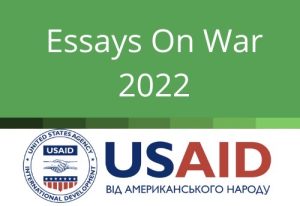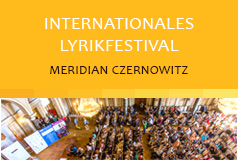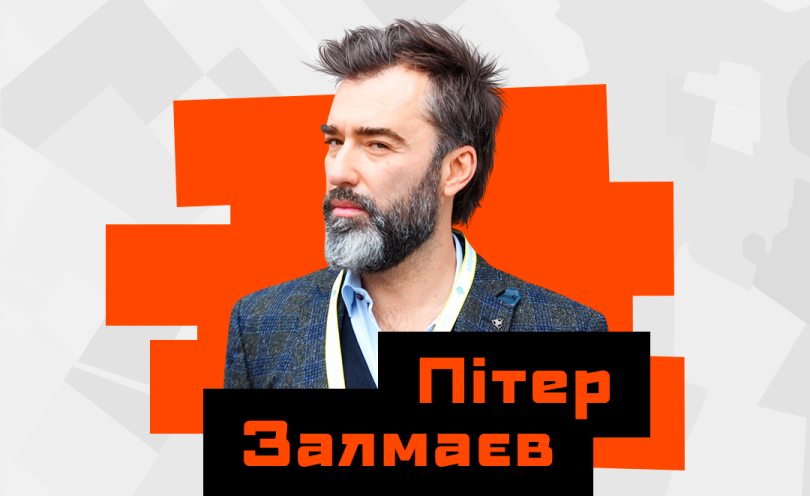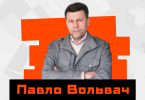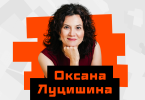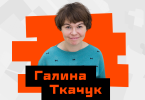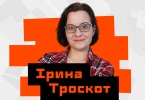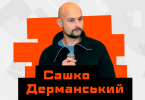War: From Black and White to Color
I grew up in dull Soviet Donetsk and recall having to close my eyes during scenes of violence in World War II movies and intimate moments in romantic films when my parents were around.And since there were no iPads or iPhones back in the 1980s, we spent most of the time together in the same room, glued to the TV. A teenage boy’s discomfort in front of his parents while watching intimate scenes is self-explanatory. The same boy’s unease during wartime violence scenes in a family setting can be understood through the Freudian concept of the interplay between Eros (the drive for life) and Thanatos (the drive towards entropy and dissolution).
At their core, both drives stem from a desire for dominance. War can be seen as a non-consensual sexual act, one of violation and the ultimate form of domination. “Whether you like it or don’t like it, bear with it, my beauty,” as an aging impotent czar said upon announcing his last and decisive sexual act.
But I digress. Those war movies that made me uncomfortable in front of my parents provided a sense of security through their black-and-white imagery, making them seem like distant, moral tales locked in the past, never to be repeated in my lifetime. Even with the introduction of VHS players in the late 80s to early 90s, war thrillers in full color maintained their separation from reality through their depiction of exotic locations and foreign languages, being played on imported tape cassettes.
When it finally broke out, the war arrived after a weeks-long schizophrenic game of second-guessing and confusion. Despite becoming increasingly imminent each day, it somehow became less tangible, a topic for jokes with the barista. I was reporting almost daily for the pro-Trump American TV channel Newsmax from the balcony of the Kozatsky Hotel with Maidan behind me, but even their anchors acted as though it was all just a game, despite the mounting warnings from western intelligence. I recall drinking coffee with Olexandr Irvanets in the Naked Room on the evening of February 23.As the Maestro subsequently wrote in Zbruc:
On Wednesday, the last pre-war evening, Peter Zalmayev and I drank coffee in the company of several beautiful ladies. Peter has an American passport, and I asked him if he would travel to the United States because of the danger of war. Zalmayev smiled through his beard: I am a journalist, so I will stay. We went out to smoke in the cafe courtyard on Reitarska Street several times. It was humid and quite warm, typical weather at the end of February. I wanted to start the next sentence with the phrase „nothing foreshadowed“ but stopped myself – no, there was still a sense of foreboding hanging in the air. And this premonition turned out to be not unfounded.
I asked the poet, who lived in Irpin, what he would do if the invading forces arrived. He confidently replied, „I’ll grab my rifle and shoot at them from my windows.“ After the „liberators“ entered Irpin, we, his faithful readers, went two long weeks without hearing from Irvanets and feared the worst. The story of the poet’s temporary disappearance even made it onto the pages of The Washington Post.
Just as there have been several instances in my childhood where I felt the urge to laugh during a funeral, perhaps as a coping mechanism, on the morning of February 24, while standing in a long line at the grocery store in my neighborhood, I felt a sense of relief and levity that what we had been dreading had finally happened. There was no longer reason to panic.
It wasn’t until the next day that reality hit me. I was waiting in a friend’s car, ready to evacuate our families to western Ukraine. Two women, walking their dogs, were saying goodbye to each other tearfully when suddenly one of them let out a blood-curdling, pre-verbal scream, a long piercing „AAAAA!!!!!!“.
Survival is the primary goal during wartime. It offers not only the possibility of heartbreak and despair but also of hope, inspiration, and even humor. As we slowly approached Khmelnytskyi on the second day of our journey, the darkness both outside and inside, was palpable. It was perhaps the darkest moment of the war for me. It felt as if hordes of orcs were invading Middle Earth, determined to enslave its inhabitants and banish the sun forever, just as described in The Lord of the Rings, one of the defining books of my childhood.
The sun rose the next day, illuminating the path between Khmelnytskyi and Drohobych. Its brilliant rays cast a spell of such intense inspiration that I was left in tears for the rest of the day. At the entrance of each quaint town or village, groups of men stood guard, from young teens to grumpy old grandpas, manning makeshift roadblocks with rusty rifles, sticks, and pitchforks. In the central square of Drohobych, women worked tirelessly, piecing together a large welded mesh reinforcement covering half the square. I watched them from the window of a cozy central café with Leonid Holberh, Drohobych’s celebrated enthusiast of Bruno Schulz. I had first met Leonid at the biennial Schulz Festival a few years before; now, I saw him celebrating a friend’s birthday and laughing through tears.
Looking back on the past eleven months, I can confidently say that being in Ukraine during those early days of conflict was like being part of a large, extended family. A family made up of close and distant relatives, all united in their struggles. It was a time when it felt good to retreat into a room, overwhelmed with pride and righteousness, as you listened to Hlyvnuk’s „Chervona Kalyna“ or Oleksandr Ponomarev’s „Ukraine Will Win.” With millions around the world taking to the streets in support of Ukraine, including in my adopted home of New York, and with heroic footage of Ukrainian soldiers destroying enemy tanks, it felt like being a proud representative of a heroic nation, fighting a battle for righteousness in the twenty-first century. This feeling of unity and purpose brought the world together, turning it into a global village with Ukraine at its heart.
The world came to Ukraine, and Ukraine became the World. This is the feeling you get when, after a month into the war, your copy of The New Yorker magazine arrives with a cover illustration of Zelensky holding up the blue-and-yellow flag. It was a sunny yet dark day on October 11 when the enemy’s „terror in the skies“ campaign began. I woke up to the sound of missiles flying overhead, with one landing in Shevchenko Park, where my children used to play. On the way home, I saw a man lying dead on a bench at a bus stop, a woman crying over him. Did he die from the fright of the noise of the missiles? Minutes later, as I headed toward the train station, another missile slammed into the DTEK tower, destroying my gym on the sixth floor with its shockwave. I was interviewed on CNN, unshaven and outraged, sharing my eyewitness account and bringing Ukraine to the world.
That is the feeling I got when Hudson Valley One, a local newspaper distributed in small towns in New York state, published a photo of me holding the “Russian warship, go fuck yourself” stamp. It was the feeling I got when listening to Pink Floyd’s version of „Chervona Kalyna“ or seeing that my favorite band from childhood, Deep Purple, painted „Deep“ in blue and „Purple“ in yellow on its social media in solidarity. Bringing the World to Ukraine.
I don’t know how and when the war will end. Our victory may not be black and white and more like thirty shades of grey. Nonetheless, one thing is certain–the experience of living through the war will leave a lasting impact and will not be forgotten. It will be remembered in every detail, not as comfortingly distant black-and-white images but in vivid color.
Translated by Yulia Lyubka and Kate Tsurkan

